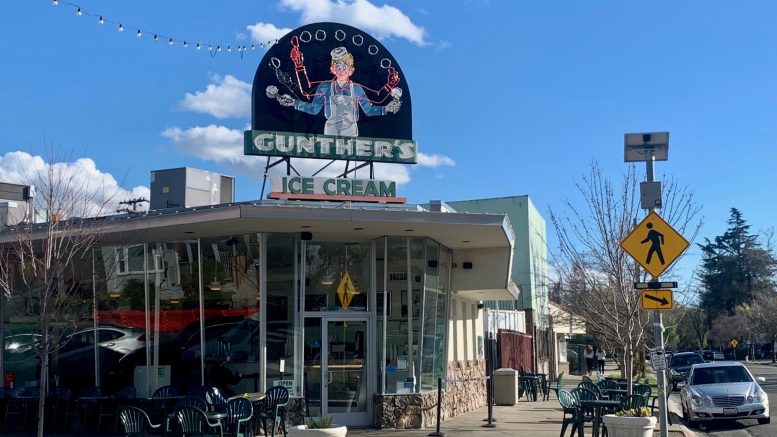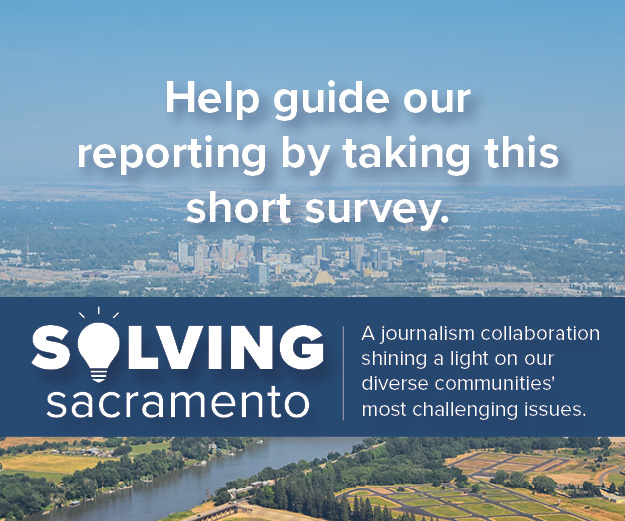Efforts afoot along the historic corridor
By Graham Womack
When Jesus Lopez returned to Sacramento after attending San Francisco State University, going to work at his family’s carniceria, he noticed something about the historic corridor it sits on, Franklin Boulevard.
“When I came back, I feel like there’s definitely an effort to get more exposure,” Lopez said.
Franklin Boulevard is one of the main streets celebrating Sacramento’s Latino heritage, with staple businesses like El Novillero Restaurant and Caballo Blanco Restaurante and the one run by Lopez’s family, Carniceria Lopez. The boulevard can sometimes get forgotten, though, among some of Sacramento’s other streets. And when it does get attention, it’s not always great, with Franklin Boulevard once named the city’s ugliest street by a newspaper.
Work is underway to improve Franklin Boulevard, with a multifaceted approach — including the use of transportation funding and nonprofit community development corporations — being pursued to fuel broader revitalization efforts. The work could also help to bring more affordable housing online, which is an ever greater need throughout the city.
Getting to know the boulevard
The first thing to know about Franklin Boulevard is that there’s not one single, defining stretch of the road. Starting at Broadway just south of Sacramento’s central city, the boulevard runs clear to the county line, finally cutting off in San Joaquin County.
“There’s basically three different Franklin Boulevards,” said Patrick Kennedy, one of three members of the Sacramento County Board of Supervisors who represents the street, along with Phil Serna and the recently elected Pat Hume.
Heading south from Broadway, first comes the upscale, tree-lined stretch at the beginning through Curtis Park, passing businesses such as Gunther’s Ice Cream and Pangaea Bier Cafe. South of Sutterville Road and 12th Avenue is a cluster of Latino-run businesses on either side of the road, such as Gaspachos juice shop, which opened in 2018 and serves a mean Horchata Frappe.
“We were looking for a location for such a long time,” said Ivan Ortiz, co-owner of Gaspachos. “The opportunity came, was presented here at a time and we just thought it was the perfect sight for the community and the growth that the boulevard or the whole area represented for us.”
South of Fruitridge, Franklin Boulevard becomes more of an industrial district. Its features include a former factory for Campbell’s Soup that is partly vacant, with a distribution center operating on the site. Serna said that continued redevelopment of the former Campbell’s site could be “a game changer for the area.”
The boulevard means something to Serna, who grew up in Curtis Park. Photos of his late father, former Sacramento Mayor Joe Serna, still hang in El Novillero, showing him with the restaurant’s owners in the 1980s when they were working on an addition to the business.
Growing up Latino, Serna said that El Novillero was just one more business along the boulevard to connect with.
“It was kind of the palpable part of our community that felt like family to me,” Serna said.
Serna remembered his father taking the street seriously, saying that not long after getting elected to city council in 1982, it was voted Sacramento’s ugliest street. Building and shop facades were looking weathered. The street also had numerous exposed utility lines. Joe Serna worked with the Sacramento Municipal Utility District to bury some of them.
Challenges and solutions for Franklin Boulevard
Today, the boulevard lacks a single champion like Joe Serna, with Sacramento City Council members Rick Jennings, Caity Maple and Mai Vang sharing representation of the district. Jennings didn’t respond to an email seeking comment. A representative for Maple’s office didn’t respond to an interview request for her. Vang’s communications director didn’t follow up after initially responding to an interview request for her.
Another significant change from the days of Joe Serna is the state’s end of redevelopment agencies in 2012, which in years past might have transformed a street like Franklin Boulevard. “Without redevelopment, it’s really forced us all to get much more creative in terms of how we find those scarce dollars to do what we want,” Phil Serna said.
To that end, local leaders have been chasing dollars from the state for Franklin Boulevard for several years, with efforts continuing to pay off. In December, the California Transportation Commission awarded Franklin Boulevard $1.577 million in funding through the state’s Active Transportation Program, part of a $12.493 million project to make the street more bikeable and pedestrian-friendly.
Beyond this, multiple nonprofit community development programs have begun to operate on, or take an interest in, Franklin Boulevard.
One of those is the Franklin Neighborhood Development Corporation, which was created in 2014 and is connected with the Franklin Boulevard Business District. “It’s another mechanism for districts to pull in some grant funds to do the community work,” said Kendra Macias Reed, who works with both organizations.
Reed’s organizations have also brought in Roshaun Davis, whose community development corporation CLTRE received nonprofit status in recent years and is helping plan and implement an outdoor mercado that would even help train its entrepreneurs to sell food and other goods along the boulevard. (Davis is also the co-founder of Unseen Heroes, an Oak Park-based marketing and events agency.)
Aside from the mercado, Davis’s nonprofit is also helping do long-range planning work along Franklin Boulevard. He’d strongly like to see more mixed-use developments where people could live above their businesses, referring to this as one of, if not the most significant element of developing a corridor.
“There has to be space for people to live, but then there also has to be business and local business, a lot of times, to keep those spaces thriving,” Davis said.
Creating more affordable housing on the boulevard
While much of the heart of Franklin Boulevard is a fairly built-out commercial corridor, there have also been efforts to create more housing.
The Sacramento Bee reported in 2021 that around the time the city council voted to approve a Measure U sales tax hike three years before, it created a $31.5 million carrot for developers to create more very low or fixed-income housing. “That effort to reseed livability in the capital city likely will subsidize builders of apartments in old, neglected commercial corridors such as Stockton Boulevard, Del Paso Boulevard, Northgate Boulevard, Florin Road and Franklin Boulevard,” the article noted.
Matt Hertel, a principal planner and long-range planning manager for the City of Sacramento said in an email that the city has “been focused on investing and incentivizing private investment along the commercial corridors and has done this in a myriad of ways, including providing gap financing to affordable housing projects.”
Hertel noted that there were no “recently submitted or pending housing applications” for projects along the boulevard, though there is an expired permit to build 118 apartments at 8009 Franklin Blvd. and a permit to build 39 apartments at 2517 Franklin Blvd. that will expire in May. Hertel expects that the 118-unit project will be resubmitted for approval. To Hertel’s understanding, each of these projects would be market-rate.
Reed later said in an email that she wished “there were more affordable housing projects planned for Franklin Boulevard, but we currently do not know of any directly on the boulevard.”
She also noted a project, Cornerstone, that Mutual Housing and Habitat for Humanity are building at the edge of her organization’s business improvement area that “will have a mix of for-sale affordable housing and multifamily units.” Cornerstone will include about 118 rental units, with 16 permanent supportive units and an additional 18 single-family homes.
Reed has also invited members of Sacramento’s lowrider community to her street for “Back to the Boulevard” events, with the city moving last year to lift a longstanding ban on cruising (that, in another political lifetime, Joe Serna championed as a city council member.)
In general, the work going on throughout Franklin Boulevard is about placemaking and strengthening community.
“My position has always been, don’t reinvent yourself,” Kennedy said. “Take what you are, celebrate it and make it the best that you can be.”
This story is part of the Solving Sacramento journalism collaborative. Solving Sacramento is supported by funding from the James Irvine Foundation and Solutions Journalism Network. Our partners include California Groundbreakers, Capital Public Radio, Outword, Russian America Media, Sacramento Business Journal, Sacramento News & Review, Sacramento Observer and Univision 19.



during the years i was a member of redevelopment’s project area committee, the tax increment money was used for facades to make things look better without actually making fundamental improvements like affordable housing.
making franklin blvd truly pedestrian-friendly would require moving sidewalks to be next to buildings rather than between the street and parking lots. also it would be nice to have level sidewalks instead of the many slopes for cars to enter parking lots.